Do you know the difference between your character and your reputation?
John Wooden, one of the greatest basketball coaches ever, said “Be more concerned with your character than your reputation, because your character is what you really are, while your reputation is merely what others think you are.”
The 7 Habits of Highly Effective People are: 1. Be proactive, 2. Begin with the end in mind, 3. Put first things first, 4. Think win-win, 5. Seek first to understand, 6. Synergize, and 7. Sharpen the saw.
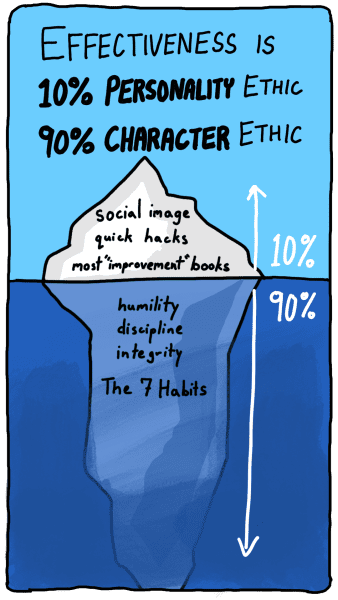
Imagine success is like an iceberg. Character is like the 90% of the iceberg that is hidden underwater and actually causing it to float, while reputation is the top 10% that we can see. Most people focus on that visible 10%.
We all want to succeed and improve our lives. Why would The 7 Habits book be able to help us? Because these habits aim to change our character from the inside-out.
Stephen Covey calls it “Character Ethic” vs “Personality Ethic.” Before writing this book, he studied over 200 years of past writing on success, and he saw a fascinating pattern. In the last 50 years, authors offered more quick-fix techniques, aimed at improving superficial things like our social image.
But success authors from over 50 years ago, from Benjamin Franklin to religious scriptures, they taught people how to develop character and adopt timeless virtues like honesty, discipline and humility. These virtues takes time to develop, but they create success that is lasting. And that’s what we would all want, isn’t it?
About Stephen Covey
Stephen Covey was a popular author, professor and speaker. His most famous work was The 7 Habits… book, which has now sold over 50 million copies, making it the best-selling self-help book ever. His teachings focus on principle-centred leadership, which can be applied in the workplace or at home. In fact, many of Covey’s examples relate to parenting, as he had 9 children and 55 grandchildren.
1. Be Proactive: Take responsibility and focus on what you can control
I’m sure we all know news junkies who are obsessed with politics. Some people complain or ruminate for hours on end about a politician they hate, perhaps comparing them to Hitler. Yet what is the final result of all that?
A Buddhist teaching says that holding onto anger is like grasping a hot coal with the intention of throwing it at somebody else—in the end only we get burned. Modern science shows the stress chemicals caused by chronic anger and outrage destroy our own immune systems and health. Obsessing over things outside our control is the opposite of being proactive.
The first habit is to “be proactive,” which means taking responsibility to create the situation around us, rather than seeing ourselves as the helpless victims of circumstance.
Here are the main points from Stephen Covey about the first habit, being proactive:
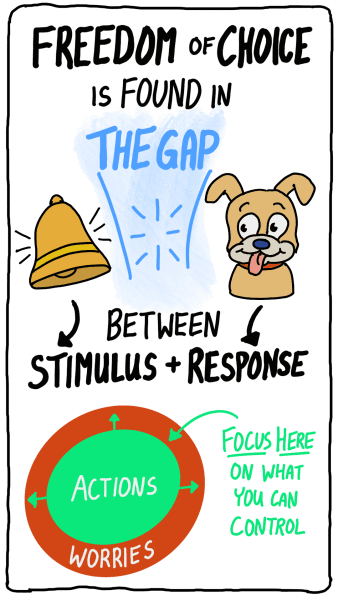
- Recognize your free choice. We have the freedom to choose our response. For a long time, the dominant view of psychology was that humans were biological machines with no free choice.
This view largely came from the Russian scientist Pavlov’s experiments on dogs and other animals in the 1890’s. He could cause dogs to drool by ringing a bell, leading to a theory of psychological determinism—that we are determined by our biology, our past, our environment. In short, stimulus causes response.
Yet beginning in the 1940’s, a new paradigm arose from psychologist Viktor Frankl, who survived the Nazi concentration camps of WW2, where millions of Jewish people died. In those dehumanizing conditions, Frankl saw that he could choose to to suffer heroically rather than sinking into hopelessness. He called it “the last human freedom,” being able to choose how we will respond to our situation. Nobody can take that away from us. Between stimulus and response, there is a gap where we have self-awareness and we can decide. - Clarify your values. We can be driven by values more than impulses. We cannot control what happens to us, which includes the weather, other people, even our moods. But we can choose what is important to us—our values—and base our actions on those values.
For example, the bestselling author Steven Pressfield wrote a great book called The War of Art where he explains the secret to overcoming procrastination in creative projects. What is the secret? Sit down and work, whether you feel like it or not. Before you feel disappointed by that, consider this… Maybe the big reason we become stuck by procrastination is because we’re looking for a way to feel different. But what if we did not need to change our feelings, but only make our actions align with what is most important to us? - Focus in your Circle of Influence. We can expand our influence by focusing on what’s in our control. When we spend a lot of time and energy dwelling on concerns outside of our control, then our power diminishes. (Such as worrying about what happened in the past or whether an asteroid will hit Earth next month.) But when we spend our time and energy on things we have the power to change, then our influence increases. We become more capable of doing even greater things in the future.
Part of this is being careful about what language we choose. If we are always telling ourselves that “I must” do this or “I have to” do that, we program ourselves in the paradigm of a victim. Instead, we can say “I choose” to do this or “I want” to do that. And the fact is, we usually do have the choice to do or not do most things, as long as we can live with the consequences. A student doesn’t “have to” hand in the exam, they “choose to” hand it in because they desire future benefits like praise from their parents and a good grade, eventually a good career.
Carol Dweck is a Professor of Psychology at Stanford. Her research into “the growth mindset” provides an evidence-based foundation for Stephen Covey’s principle of being proactive. You see, Dweck found that people tend to have either a fixed mindset or a growth mindset.
People with a fixed mindset believe their intelligence and abilities are fixed, therefore any success they achieve is caused by gifts they were born with. They also see failure as a negative judgment on their own worth.
On the other hand, people with a growth mindset believe they can grow their intelligence and abilities, through a combination of the right effort, strategy, and feedback. They see failure as a stepping stone to learning. Dweck’s research found students with a growth mindset were more resilient, leading to higher grades and achievement.
Read more in Mindset by Carol Dweck (our summary coming soon!)
I would say Stephen Covey missed one important element of being proactive. More recent neuroscience research shows that while humans do have willpower, it is a limited amount of willpower. There is actually a specific part of our brain called the prefrontal cortex which allows us to override our impulses. However, over the course of a day, this willpower we have becomes depleted as we make decisions and get fatigued. That’s why after a stressful day we can’t seem to resist that guilty pleasure.
Our limited willpower is why we need habits, routines and systems in our lives. They help us to live by our long-term values, even when we have no energy to make the right choice. The old philosopher Will Durant got it right when he said, “We are what we repeatedly do. Excellence, therefore, is not an act but a habit.”
Habit 1 is “be proactive.” It means taking responsibility for our lives, beginning with working on what we can control. It is based on psychologist Viktor Frankl’s idea that humans can choose their response in any situation. The opposite is being reactive, seeing ourselves as helpless victims of our circumstances.
2. Begin With The End in Mind: Live based on how you want to be remembered
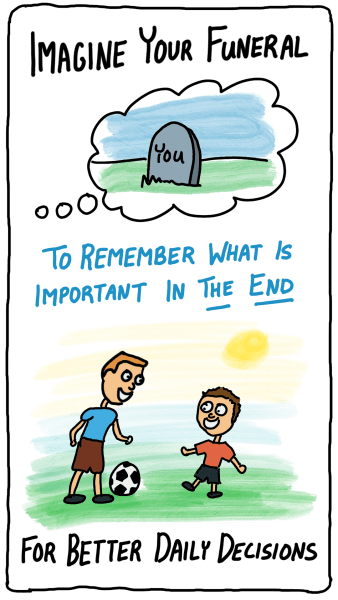
Now, imagine if you died and were able to sit at your funeral. You saw four people giving short speeches about who you were: one person from your family, one of your friends, one from your work, and one from your community like a church.
What would you want these people to say about you after you’re gone? Write that down.
This funeral exercise helps us to clarify what is truly important to us—our values. In the rush and stress of daily life, it’s easy for us to lose touch with that.
But if we want to live effectively, if we want to live well, then we must always begin with the end in mind.
This exercise reminds me of the ancient Stoic philosophers, who would often tell us to remember death. That was their method of reconnecting with what is important in the end. By remembering death, we overcome fears about our reputation and what other people think. Because soon enough we, and everyone we know, will be transformed into bones or ashes in the ground.
Here are some of Covey’s lessons on the second Habit:
- Change your paradigms. We can change ourselves most effectively by changing how we see. Our paradigms are like lenses through which we see the world, or like maps we use to navigate the world. Stephen Covey believes lasting personal growth comes not from willpower, but deep paradigm shifts.
An exercise like visualizing our funeral creates a dramatic shift of perspective effortlessly.
For example, one of Covey’s sons was falling behind in school, so at first they tried to protect and motivate him. Later, they realized that was actually a “kind manipulation” motivated by their own selfish needs. They made a paradigm shift to valuing their son regardless of how he performed. In the end, the son did end up becoming a great scholar and athlete.
- Build Emotional Bank Accounts. We should always consider our relationship’s long-term health. Imagine each relationship that you have contains an Emotional Bank Account. You can make deposits to strengthen that account, by listening, understanding, and making time for that person. You also make withdrawals when you don’t show empathy, kindness and love.
For example, a parent can use their larger physical size to gain quick compliance from their child, but over time too many of those withdrawals deteriorate the relationship. In the future, when the child has a true crisis, the foundation of trust won’t be there for them to seek your advice. So the Emotional Bank Account is a key paradigm we must always remember. - Construct Mission Statements. We can create mission statements for ourselves, our family, and our organization. A mission statement is a document which can be used to make difficult decisions easier. You can write your mission statement by breaking your life into several major roles that you play (father, husband, boss, pastor, coach, etc.), then choosing the most important goals for each role. Then you can use visualization to picture how you would live out that mission statement, and create some affirmations to keep it top of mind during critical situations.
A mission statement exemplifies the difference between leadership and management. Leadership is about setting the long-term direction for the company, while management is the daily execution. When making a shared mission statement for the group, it’s important everyone is involved in making it because otherwise they won’t feel ownership to live by the values inside. That is why corporate mission statements written in a secret boardroom don’t work—each employee must be involved in writing their own version of the company’s overall mission.
Recently, the business book Start With Why by Simon Sinek was a massive hit. At the core, Simon explains a very simple idea: that great companies are held together by a common mission, purpose, or why. That mission even extends to the customers—as Simon wrote, “People don’t buy what you do, they buy why you do it.” For example, Apple’s why is to “think different.” And that mission continues whether they are making computers, music players, or smartphones.
Habit 2 is “begin with the end in mind.” It means visualizing how we want to be remembered at the end, then working backwards to determine how we want to live. Mission Statements are a useful tool to make sure our daily decisions are aligned with our ultimate vision.
3. Put First Things First: Allocate your time by scheduling the most important things first
Imagine a parent that knew, deep down, that they should set aside time every day to connect with their child emotionally and intellectually. But the problem is that every day is filled with things that must get done—getting ready for school, making lunches, commuting to work, and finishing the chores. By the end of the day, there is only time and energy left for going to sleep. Yet if that kind of hectic day is repeated over and over again, then the most important thing becomes neglected—their relationship.
What if the parent first scheduled 15 minutes of face-to-face conversation, as a non-negotiable daily appointment? Perhaps this time could be set aside while eating breakfast or just before tucking the child in bed. Then the rest of the day’s chores would have to be done only after this “daily deposit” in the relationship was completed. That is called putting first things first.
Here are some more of Stephen Covey’s tips on this third Habit:
- Understand the 4 Quadrants. All activities fit into being important or unimportant, and urgent or non-urgent. The activities we must focus on for long-term effectiveness fit into quadrant 2: the important yet non-urgent. That includes building relationships, honing our skills, and learning. Typically, our energy is stolen by things which are simply urgent: the notifications and emergencies. But those activities don’t help our long-term effectiveness or success.
- Organize weekly for 30 minutes. First divide your life into your most important roles (wife, mother, daughter, sister, accountant, charity volunteer, etc), then write down the most important goals for each category. Then you’ll want to either schedule the activities or delegate them to the right person. That brings us to…
- Practice stewardship delegation. The most effective type of management allows people to take ownership over their work. That means we don’t micromanage how they complete the work, but simply give them the vision of the end result, with some basic guidelines and rules for accountability. For example, the author gave his son responsibility to take care of their lawn, with the simple direction to keep it “green and clean.” After a first week with some troubles, no more nagging or supervision was required.
Another top-selling self-help book is The 5AM Club by Robin Sharma. It gives a simple rule that we can follow to focus on what is most important: The 90/90/1 Rule. That means for the next 90 days, you should work the first 90 minutes of each day on your 1 most important project.
Why? Because what separates the top 1% of achievers from everyone else comes down to one word: focus. One time Bill Gates and Warren Buffet were in the same room when they were asked to write down one word that explained their extraordinary success. And can you believe it? They both wrote down the same word: “Focus.” Gates focused on software, Buffet on investing.
Habit 3 is “Put first things first.” We should spend 30 minutes every week allocating time for what is most important. Covey calls them Quadrant 2 activities: the important yet non-urgent things like nurturing relationships that contribute the most to our long-term effectiveness. Otherwise our schedule will be filled with activities that are simply urgent and steal our attention.
4. Think Win-Win: For you to win, they do not have to lose
I remember 10 years ago I was building my first real online business. I was selling online courses about confidence and social skills. And I noticed there were other people with similar websites selling similar products. My first instinct was to view them as competitors. I even felt a little jealous—If they appeared to be doing well, then I felt like their success may be hurting my own business.
Then one day, I was listening to a marketing teacher that I deeply respect and he shared a surprising idea. He said the best thing to do with competitors… was to cooperate with them! He said we can find websites selling similar products and build mutually beneficial partnerships. In other words, I could introduce their products to my audience, and they could do the same in return. As a result, we would both win. With time and experience, I saw great profit in that strategy and my business grew better than ever. And that is the essence of thinking win-win.
In The 7 Habits, Covey says there are multiple paradigms for cooperation:
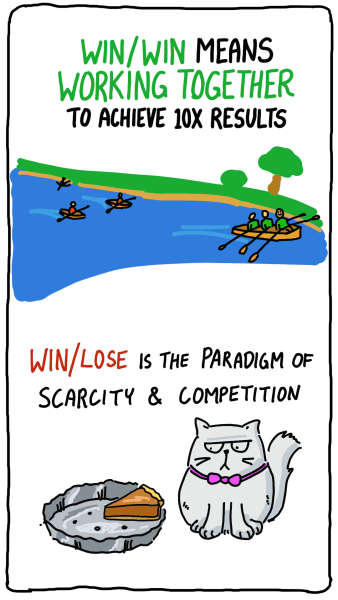
- Win/win: This means always seeking mutual benefit when we work with others. The win/win paradigm is based in abundance, a feeling there is plenty in the world for everyone.
- Win/lose: This paradigm believes in zero-sum competition, it is based in a paradigm of scarcity… a belief that for us to win, someone else must lose. As they say, “It’s my way or the highway.”
- Lose/win: This is the mindset of the victim or martyr, like “okay I’ll lose so you can win.”
- Lose/lose: This paradigm is mutual destruction, often based in revenge. Nobody wins.
Most people understand intuitively that win-win is the right foundation for relationships that benefit us in the long-term. If we want relationships that provide benefit, they must provide mutual benefit, which means the other person must be happy with the deal.
However, we need to make sure our actions align with being win-win, not just our words. One manager was complaining to the author that his company showed little cooperation. It turns out there was a big competition happening, where each manager in the company was competing against each other for a tropical vacation! All the incentive was for them to avoid cooperation! A better solution that would be win-win would be keeping a group score for all the managers and/or making each manager beat their old personal best.
The most effective way to build relationships of long-term benefit is with the paradigm of win/win. That means always seeking mutual benefit when we work with others. This is based in a belief in abundance, that for us to win others do not need to lose.
5. Seek First to Understand: Listen with honest intention to understand their point of view
We’ve all had experiences where we mention a problem that is bothering us, then another person jumps quickly to offering their advice, opinion, or judgment. For example, a teenager is considering whether to go to university, and their well-intentioned parents immediately begin arguing the reasons for going.
That is just like a doctor prescribing medicine before we feel he has made an accurate diagnoses. If we don’t feel the other person truly understands our situation, then we will give their advice almost no consideration. We will feel “they just don’t understand.” And that is why the fifth Habit is “Seek first to understand, then to be understood.”
Here are some key points about this fifth Habit:
- Begin with the right intention. The right intention is to listen and understand, to see the world from their point of view. That may sound obvious, but when a disagreement arises, most people begin with a very different intention: to influence, control and manipulate the other person. Even most “active listening” techniques fail here, because they focus too much on outer behaviors. The most important thing is our deeper intentions—people can sense when we truly want to understand them.
- Risk being influenced. The paradox of influence is that we want to influence others, we must first be willing to be influenced by them. That is risky because it may be us that is changed by the conversation, and that is why it’s so difficult for us to make ourselves vulnerable by truly listening.
- Reflect back what they say. To show you’re listening, reflect back the content and feeling of what they said, in your own words. This creates “psychological air” that shows you’re allowing them to speak, rather than quickly offering your own thoughts. For examples, “you sound upset about not receiving the promotion.”
The greatest recent book on negotiation is probably Never Split the Difference by Chris Voss, who was an FBI agent for 24 years and became the FBI’s lead kidnapping negotiator. So in his book, he shares many intense stories of conversations that he had with terrorists and criminals. Yet even in those extreme situations, it always began with listening.
His negotiation method begins with the principle that “people want to be understood and accepted” so we must begin with “a sincere desire to better understand what the other side is experiencing.” In practical terms, Chris Voss would often summarize what the other person had told him, in his own words. He found that almost everybody would calm down and be willing to talk, after they felt effort was being made to understand them.
Read more in our summary of Never Split the Difference by Chris Voss
Most people listen with the intention to influence, control or manipulate the other side into doing what they want. But if we want to influence someone, then we must begin with the honest intention to understand their point of view. That means we risk being influenced, and we practice reflecting back what they are saying.
6. Synergize: Build complementary relationships where 1 + 1 = 10
This next part reminds me of an old story about a blind man and a lame man… Once upon a time, there was a blind man who could not see and a lame man who could not walk. The lame man offered to ride on the shoulders of the blind man, providing his eyes in exchange for the other man’s legs. The blind man agreed to the deal and they were able to accomplish a great journey. That is the essence of synergy—working with others so we can accomplish so much more than we could individually.
Synergy means the whole is greater than the sum of the parts. When we build relationships that have true synergy, the total benefits to everyone involved are not 1 + 1 = 2, but 1 + 1 = 10.
Stephen Covey offers some tips for creating synergy with others, and these tips are heavily inspired by a classic book called Getting to Yes, written by three Harvard experts on negotiation:
- Work side-by-side with other people. When making a deal, see others as part of the solution, not part of the problem. This means getting past our automatic tendency to see them as being on the opposite side to our interests. That requires valuing our differences, including different ways of seeing the world.
- Listen for their needs underneath their positions. People tend to enter a negotiation with “position,” which are like opening arguments about what they want. For example, the seller of a used car wants $20,000 and the buyer wants to pay $15,000. But if we can look beyond those positions to underlying needs, then we open the door to creative new agreements.
- Brainstorm new alternative options. Can you solve the needs of both sides better with some creative new solution? For example, perhaps the seller of the used car has a friend who can provide a discount on car financing, insurance, or winter tires. In this way, the buyer can benefit, the seller doesn’t need to drop the price as low, and the seller’s friend gets a referral. Win-win-win.
Synergy means creating relationships where everybody benefits much more from working together than they would have by working individually. It’s not 1 + 1 = 2, but 1 + 1 = 10. To create synergistic agreements, work with them side-by-side, listen for needs underlying their position, and brainstorm new alternatives that meet everyone’s needs better.
7. Sharpen the Saw: Make time for renewal to remain effective long-term
Did you ever hear the story of the golden goose? This is an old fairy tale with an important message. One day, a farmer found a goose and he took it home. Suddenly, the goose lay a golden egg! The farmer was overjoyed. The next day the goose lay another golden egg, and the day after that.
But then the farmer got greedy. He thought that he could kill the goose and take all the golden eggs from inside of it without needing to wait. But when he did, he found no golden eggs inside of the goose. It had to make a new egg each day just like any other goose. And the farmer lost all the future golden eggs he would have received.
In the same way, we need to take care of the things in our lives that bring us golden eggs, like our personal well-being and relationships. Stephen Covey calls this “sharpening the saw.” That comes from an old piece of wisdom once said by an experienced woodcutter: “Give me six hours to chop down a tree and I will spend the first four hours sharpening the saw.”
He also calls this concept “The P/PC Balance,” which means maintaining a balance between our production and our production capacity, or ability to produce in the future.
Every day, we must take care of our:
- Physical health. Through daily exercise and healthy eating.
- Mental health. Taking regular breaks, vacations, and time off.
- Emotional health. Covey calls this “social-emotional” health because our emotions are so closely tied to our social life. So we need to nurture close and healthy relationships with others.
- Spiritual health. Prayer, meditation, community religious services—however you find spiritual renewal.
If we neglect to take care of our personal well-being or relationships, then we are killing the goose that lays golden eggs in our lives. So every day, we must do things to “sharpen our saw” and maintain our health: physically, mentally, emotionally, socially, and spiritually.
- Draw 2 circles on a page. A smaller circle that says “Circle of Influence” and a larger circle around it that says “Circle of Concern.” Then write down in your Circle of Influence everything that is in your control, and write down in the larger Circle of Concern everything else that you think and worry about. The more you can focus on things within your control, the more effective and happy you will be.
For example, a possible upcoming recession is outside of anyone’s control, so worrying about it isn’t helpful. However, building 6 months of emergency savings is more within our control, and that is something we can do to prepare for upcoming economic storms. - Imagine your future funeral and write down what you’d like people to say about you. You can break this down into what 4 different people would say: a family member, a friend, a coworker, and a member of your community. What kind of person would you want to be remembered as? This exercise creates a a change in perspective, a paradigm shift, so we can get in touch with what is important to us, also known as our values.
To stay in touch with your values daily, you can then write down a 5-minute mission statement based on that visualization. This helps us make decisions from the perspective of long-term values, rather than short-term impulses and reactions. - Next time you disagree with someone, first reflect back what they say. That means paraphrasing the content and emotions of what they told you, but in your own words. For example, if a child says “I hate school!” don’t reply with your opinion like “But you have to study!” Instead, begin with understanding: “It sounds like you had a rough day at school, huh?”
According to Stephen Covey, if we want influence with another person, the most important thing is not a technique, but listening with the true intention of understanding where they are coming from. Trying to see the world from their eyes. You will often find that when the other person feels we understand their position, they relax and open up to hearing our opinion. Otherwise, they will resistant.


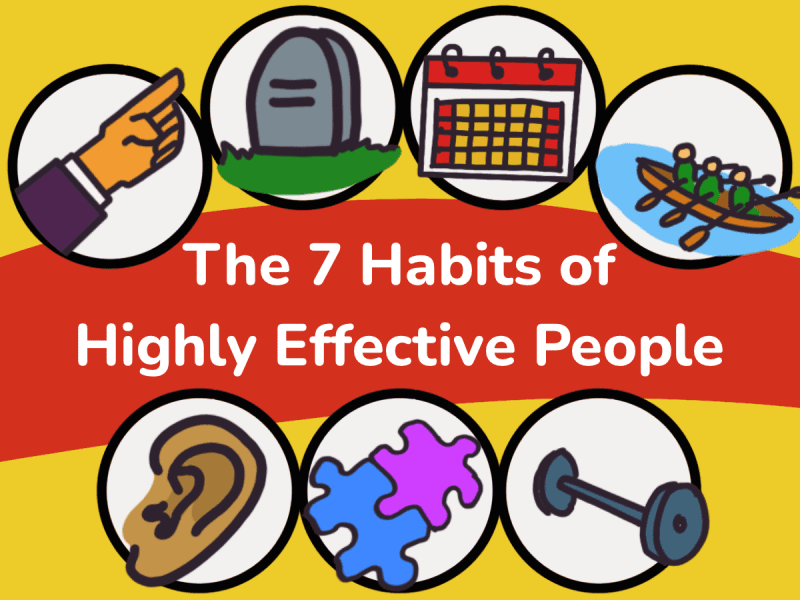
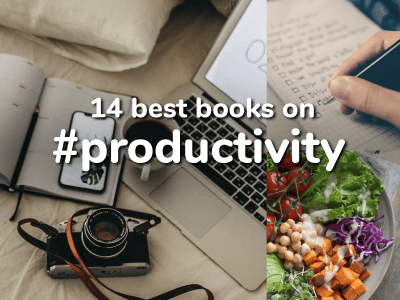
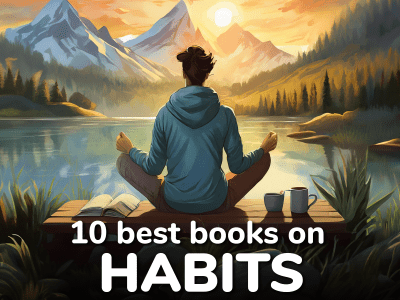
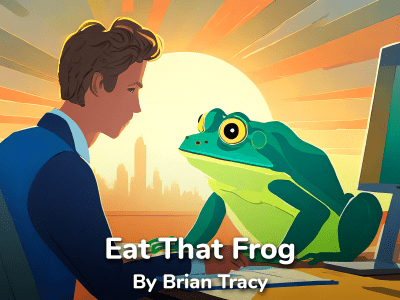
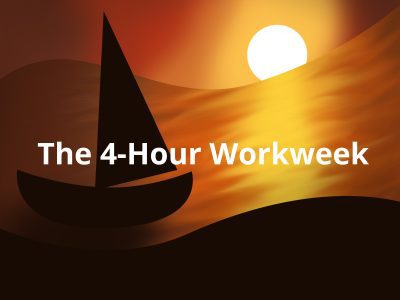
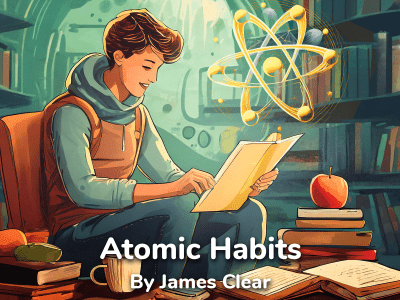

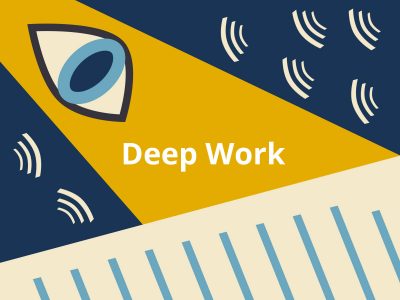
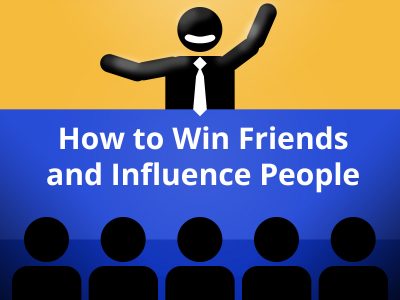
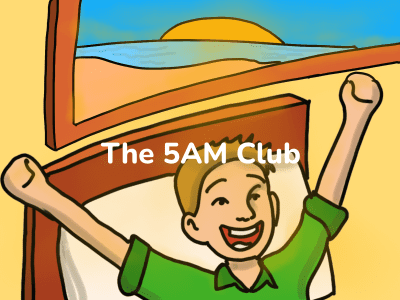









Community Notes